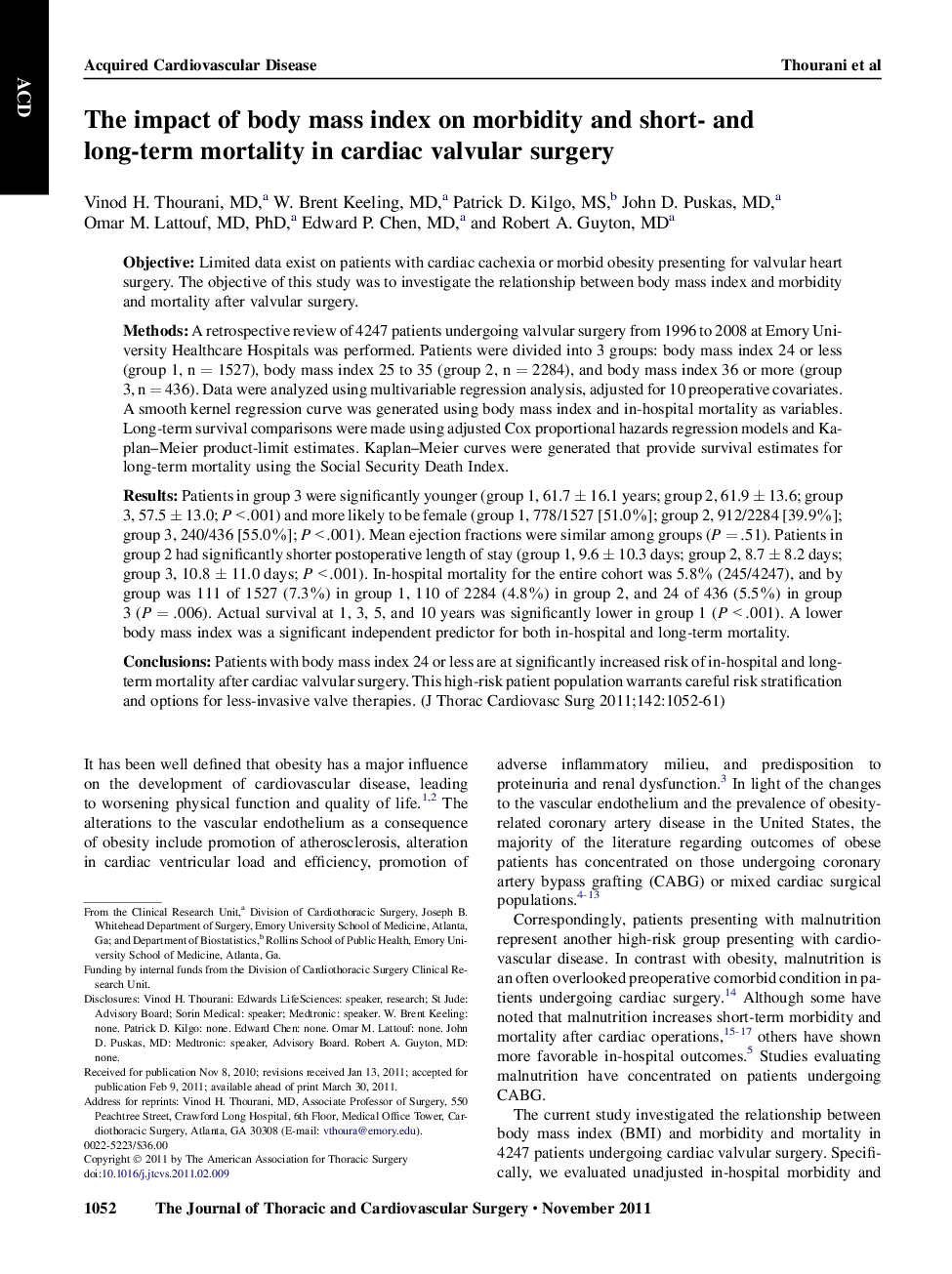| کد مقاله | کد نشریه | سال انتشار | مقاله انگلیسی | نسخه تمام متن |
|---|---|---|---|---|
| 5990634 | 1578643 | 2011 | 10 صفحه PDF | دانلود رایگان |

ObjectiveLimited data exist on patients with cardiac cachexia or morbid obesity presenting for valvular heart surgery. The objective of this study was to investigate the relationship between body mass index and morbidity and mortality after valvular surgery.MethodsA retrospective review of 4247 patients undergoing valvular surgery from 1996 to 2008 at Emory University Healthcare Hospitals was performed. Patients were divided into 3 groups: body mass index 24 or less (group 1, n = 1527), body mass index 25 to 35 (group 2, n = 2284), and body mass index 36 or more (group 3, n = 436). Data were analyzed using multivariable regression analysis, adjusted for 10 preoperative covariates. A smooth kernel regression curve was generated using body mass index and in-hospital mortality as variables. Long-term survival comparisons were made using adjusted Cox proportional hazards regression models and Kaplan-Meier product-limit estimates. Kaplan-Meier curves were generated that provide survival estimates for long-term mortality using the Social Security Death Index.ResultsPatients in group 3 were significantly younger (group 1, 61.7 ± 16.1 years; group 2, 61.9 ± 13.6; group 3, 57.5 ± 13.0; P < .001) and more likely to be female (group 1, 778/1527 [51.0%]; group 2, 912/2284 [39.9%]; group 3, 240/436 [55.0%]; P < .001). Mean ejection fractions were similar among groups (P = .51). Patients in group 2 had significantly shorter postoperative length of stay (group 1, 9.6 ± 10.3 days; group 2, 8.7 ± 8.2 days; group 3, 10.8 ± 11.0 days; P < .001). In-hospital mortality for the entire cohort was 5.8% (245/4247), and by group was 111 of 1527 (7.3%) in group 1, 110 of 2284 (4.8%) in group 2, and 24 of 436 (5.5%) in group 3 (P = .006). Actual survival at 1, 3, 5, and 10 years was significantly lower in group 1 (P < .001). A lower body mass index was a significant independent predictor for both in-hospital and long-term mortality.ConclusionsPatients with body mass index 24 or less are at significantly increased risk of in-hospital and long-term mortality after cardiac valvular surgery. This high-risk patient population warrants careful risk stratification and options for less-invasive valve therapies.
Journal: The Journal of Thoracic and Cardiovascular Surgery - Volume 142, Issue 5, November 2011, Pages 1052-1061